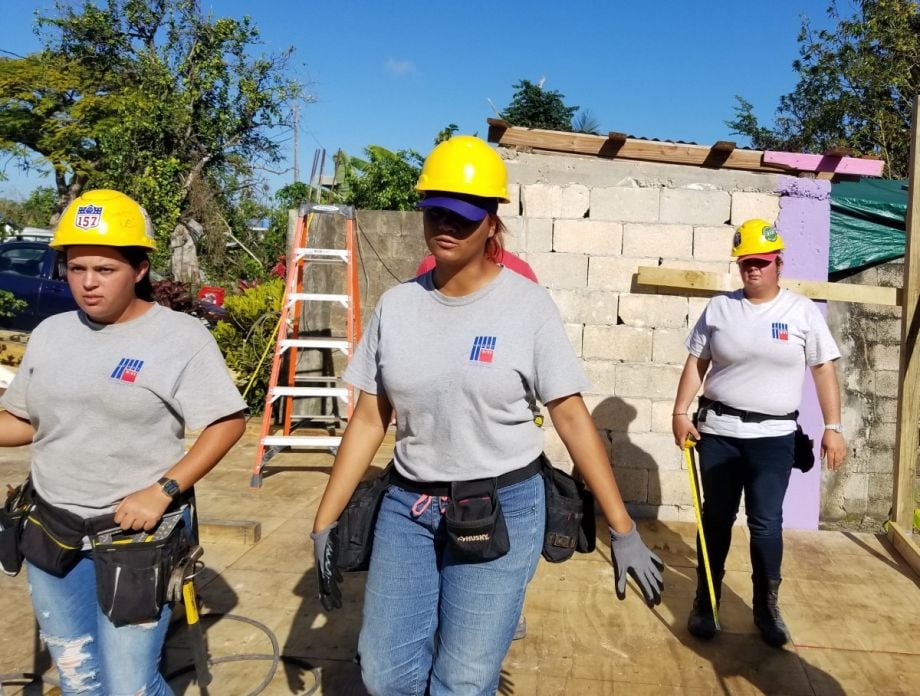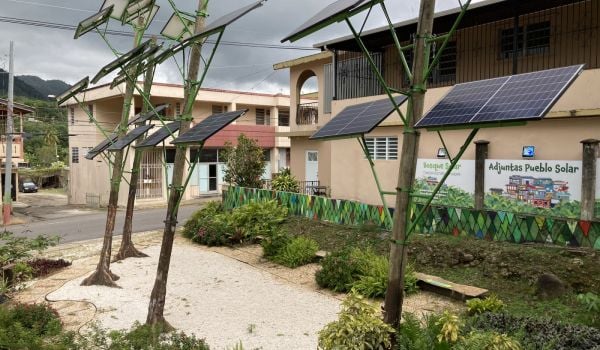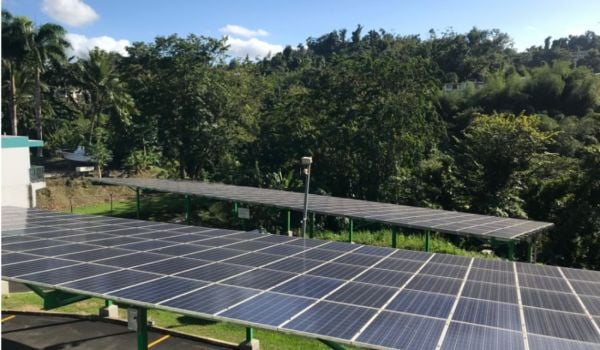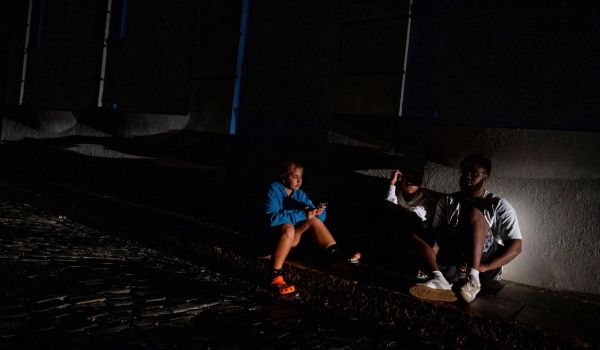Hurricane Maria devastated Puerto Rico. For months, parts of the island continued without power and clean drinking water. Thousands left the island for the mainland while others continued to live in precarious conditions. Now, Enterprise Community Partners, a national affordable housing developer that has worked on the island since 2007, along with the University of Puerto Rico and the Puerto Rico Builders’ Association, has published a guidebook — Keep Safe: A Guide for Resilient Housing Design in Island Communities — detailing how individuals and developers can better prepare for the next storm.
Ricardo Álvarez, a partner with Álvarez, Diáz and Villalón Architecture and Interior Design, tells Next City that building spaces that facilitate community life is central to resilient design. Álvarez helped spark the guide’s creation.
“One thing that we’ve learned is that when a hurricane hits or when a fire, anything happens, the first group that helps is your own community, and you can’t just wait to see FEMA or the federal government get on a plane and help you,” Álvarez says. “You have to be able to get help from your own friends and families and community members,” he says. “That’s why it’s important to be community-focused and not housing-focused.”
To help readers ready to move beyond a focus on protecting their own homes, for example, the guide includes a section called “Community Engagement: Prepare for Action Together.” This section describes how to develop a community disaster plan, prepare a community shelter, and strategize for post-disaster efforts.
Acknowledging the importance of an expanded community during times of crisis was critical for the guide, Álvarez says. It contains interviews with community-based organizations that provided meals and other support to residents in the immediate aftermath of the storm. The guide also outlines how to develop a community disaster plan by breaking into working groups and identifying resources such as vehicles that could be used during rescue and recovery efforts and people who can help communicate with others through everything from sign language to satphones.
Laurie Schoeman, Enterprise´s National Senior Program Director on resilience, says the guidebook’s lessons can be transferred to tribal and rural contexts.
A precursor to the island guide was published in 2016 and focused on resilience in the wake of Superstorm Sandy. Schoeman says that manual identifies 19 strategies to make multi-family buildings more resilient to climate risks.
“There was no guidance out there to help multi-family housing owners think of practical ways of fortifying their properties,” Schoeman says. “Most of the guidance at the time was about lifting and elevating buildings. Well, good luck trying to elevate a 300-unit, multi-family housing facility.”
Similarly, Puerto Rico’s unique challenges haven’t previously been addressed in resiliency manuals. As an island, Puerto Rico is particularly vulnerable to heavy storms, and its geographic isolation means that bringing supplies is costly. Another factor to consider in the island’s resiliency is the large number of homes built by their owners. As a result, the island guide covers — in addition to topics such as the risks associated with Puerto Rico’s mountainous landscape, strategies for fortifying building sites and tactics for dealing with the extended loss of power and water — some of the more technical aspects of building resiliency.
“One of the things we wanted to do in this project and one of the goals we had, is to sort of demystify what some of these systems are comprised of,” Schoeman says. The Keep Safe manual aims to break down for lay people some of the more technical aspects of housing, such as how water arrives at a home and how electrical systems operate. For example, it explains what an inverter is — a device that converts direct current (DC) to alternating current (AC) — and the role it plays in the home’s power system. This, she says, can help people not only understand their home’s infrastructure, but also make choices about what the best options are when they are considering upgrades.
Schoeman explains that, for example, if the main power grid has been knocked out, residents would need to be able to disconnect from that grid and operate on a micro-grid by, say, installing solar panels. “It’s good to have that if you don’t have water or gas or propane coming in,” Schoeman says.
“How can you maintain habitability should there be no electrical coming in?” Schoeman asks. The guide, she says, outlines both strategies for building new homes that can take advantage of passive solar energy — such as creating windows or skylights that allow light in instead of using electricity — and suggested retrofits for existing buildings. Altogether, the guide outlines 28 resilience strategies that are explained in writing, with diagrams to enable people to implement them.
Schoeman and Álvarez met at a conference in Puerto Rico after Hurricane Maria. At the time, he was president of the Puerto Rico Builders Association. The two quickly agreed that Puerto Rico didn’t need a parachute solution. The island needed a response that came from those embedded in the community that could address issues such as informal construction and the need for mid- and long-term development strategies.
“Most of the communities feel forgotten,” Álvarez says. “They don’t trust the government. They don’t trust people coming in because they feel they have to waste their time every year or two for this community meeting for this politician to get press and then nothing happens.”
Puerto Rico’s mountainous terrain means that communication, power transmission and travel can be complicated after a disaster. But Schoeman sees this as an opportunity to move a substantial portion of the population onto a clean-energy system. “There are a lot of federal dollars coming in to Puerto Rico for mitigation and resiliency, and we feel it’s very important to highlight some ways that funding could be programmed,” she says. Schoeman acknowledges that while Puerto Rico has an opportunity to shift toward using renewable sources of energy, it won’t abandon the current power system. Still, she says: “There should be a way for the community to say: ‘The grid is down, but we’re up.’”

Zoe Sullivan is a multimedia journalist and visual artist with experience on the U.S. Gulf Coast, Argentina, Brazil, and Kenya. Her radio work has appeared on outlets such as BBC, Marketplace, Radio France International, Free Speech Radio News and DW. Her writing has appeared on outlets such as The Guardian, Al Jazeera America and The Crisis.
Follow Zoe .(JavaScript must be enabled to view this email address)





_1200_700_s_c1_600_350_80_s_c1.jpg)










